Sa Dec – flower town on a quiet branch of the Mekong
Sa Dec is a mid-sized town in Dong Thap Province, sitting along a quiet arm of the Mekong River. Life here revolves around canals, nurseries, and local markets rather than tourism, giving it a down-to-earth character. The town is best known for the Tan Quy Dong Flower Village, where flowers and bonsai are grown on raised beds above the water, and for the Huynh Thuy Le Ancient House, tied to Marguerite Duras’ novel The Lover. You’ll also find traces of its Chinese-Vietnamese merchant past in pagodas and old shopfronts.
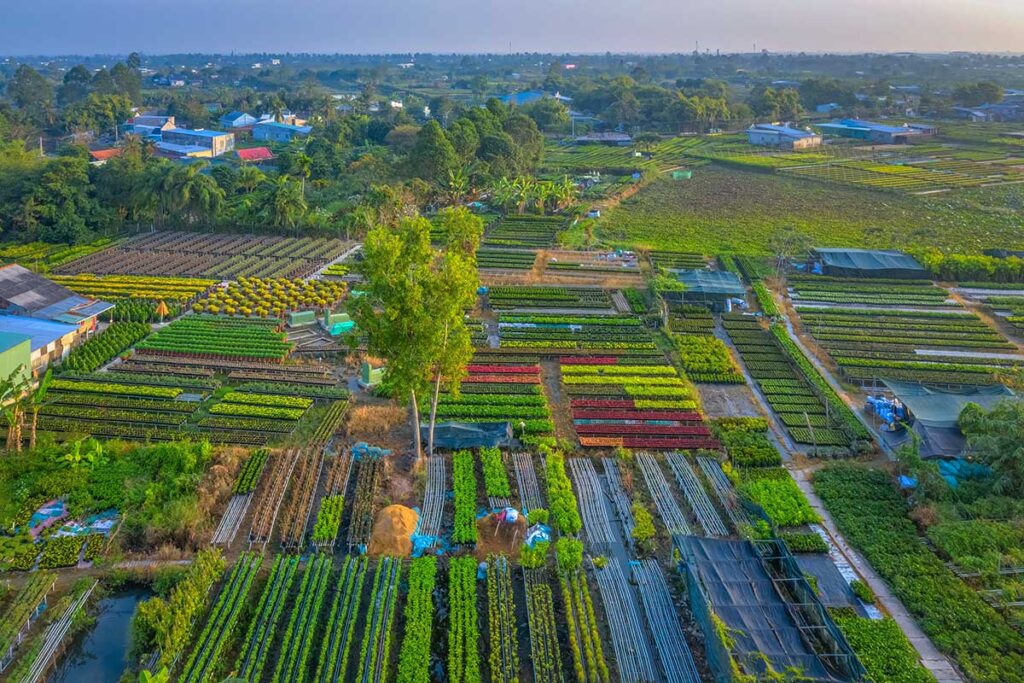
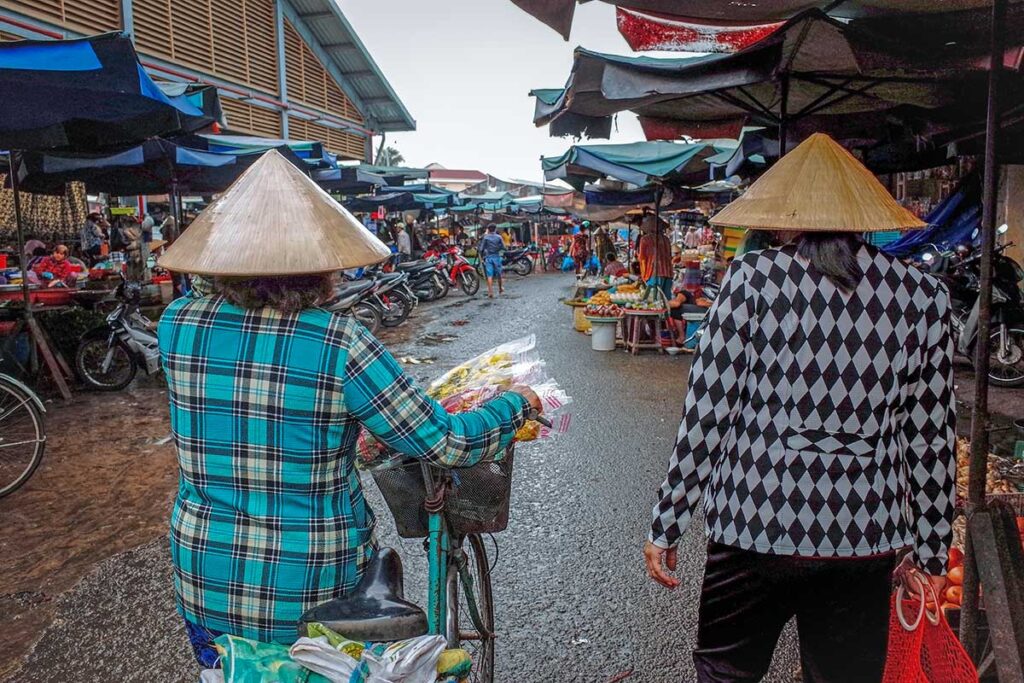
For travelers, Sa Dec isn’t a “must-see” city of Vietnam, but it makes a pleasant base if you want to see a quieter side of the Mekong Delta. It has enough sights for a day, plus easy access to wetlands, bird sanctuaries, and craft villages in the surrounding countryside. Expect authentic markets, flower-filled lanes, and a few simple restaurants and cafés—more charm than polish, and certainly fewer tourists than in Can Tho or Ben Tre.
Best things to do in Sa Dec town
If you’re looking for things to do in Sa Dec, most of the highlights are packed into the town itself and can be explored at an easy pace. Don’t expect big-ticket attractions or a polished tourist circuit; instead, Sa Dec offers a mix of flower-filled lanes, historic houses, and authentic markets. A day here gives you enough to see without rushing, and the atmosphere is more about soaking up the small details of daily life than ticking off sights.
1. Sa Dec Flower Village (Tan Quy Dong)
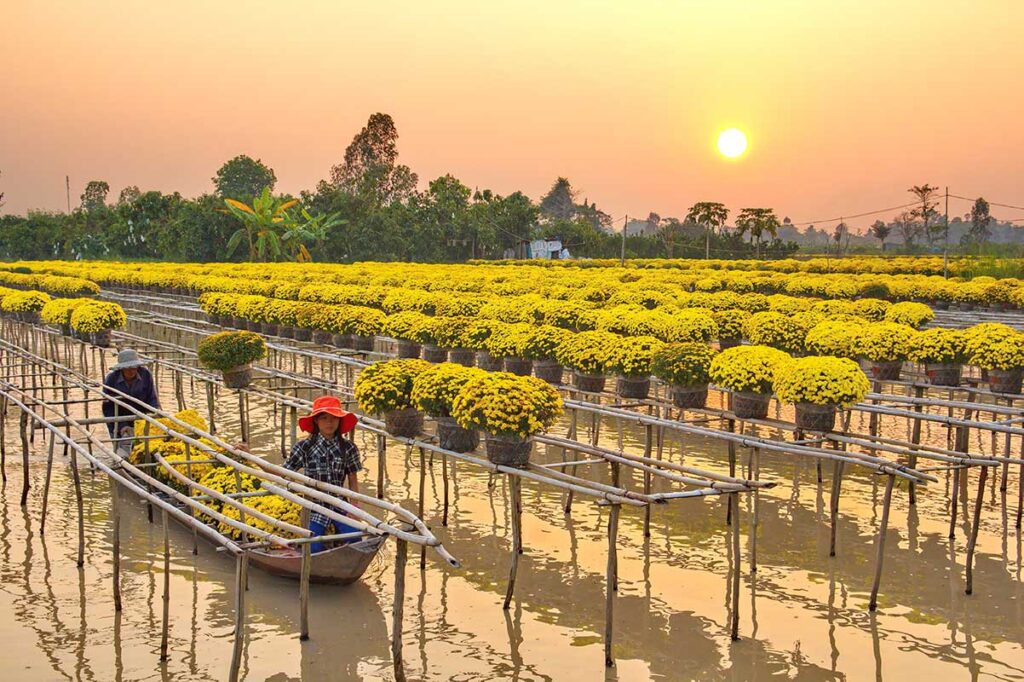
Sa Dec Flower Village is a century-old nursery area and the main reason Sa Dec is on the map. Flowers and bonsai are cultivated on raised beds above waterways, with gardeners paddling small boats between the rows. The most impressive time to visit is about two weeks before Tet (Vietnamese New Year), when the village bursts into color and boats are loaded with flowers for transport all over the country.

Outside that period, it’s a quieter working village, still photogenic but without the festival-like bustle. The best way to see it is by walking or cycling the narrow lanes in early morning or late afternoon light. Always ask before entering plots, and expect the occasional small fee if you want to take photos up close.
2. Sa Dec Town Park & Riverside Promenade
The town park runs along the riverside and makes for a relaxed evening walk. Locals gather here for street food, ice cream, and casual cafés while children play on the wide embankment. It’s not spectacular, but it’s one of the best places to feel the town’s rhythm. Start near the market and follow the riverbank north; sunset into the early evening is the liveliest time.
3. Huynh Thuy Le Ancient House
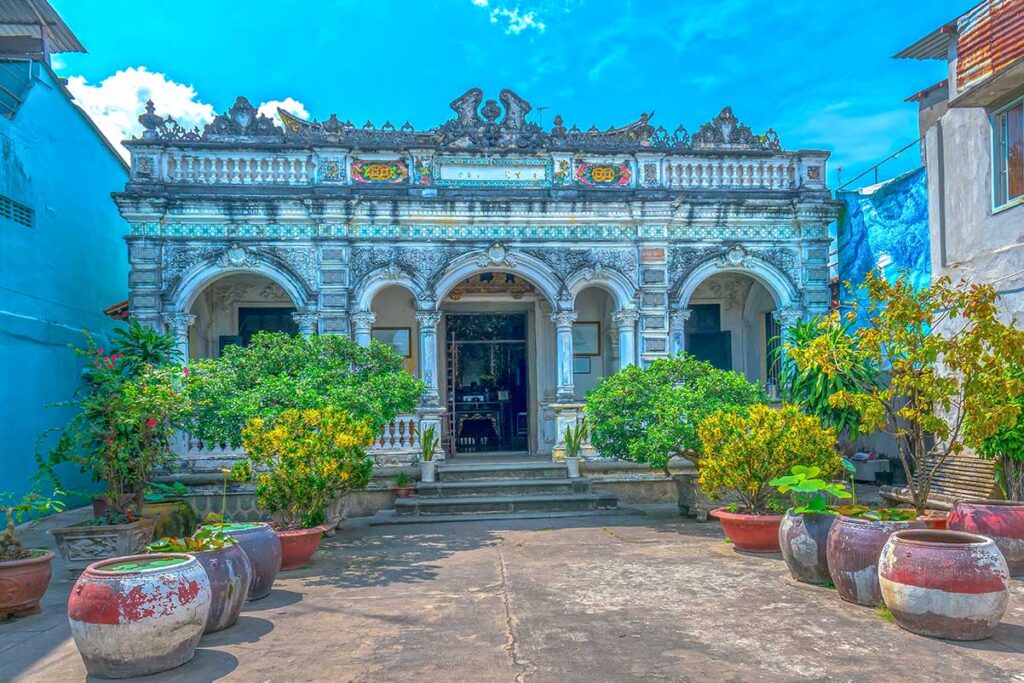
Built in 1895, this Sino-French villa is tied to Marguerite Duras’ semi-autobiographical novel The Lover. Inside, you’ll find ornate wood carvings, tiled floors, and family memorabilia. It’s a small site—most visits last 20–30 minutes—but worth a look if you’re nearby. Entry costs a modest fee, and staff often give short explanations about the house and its connection to the novel. Combine it with the nearby market and Kien An Cung Pagoda for a simple walking loop.
4. Kien An Cung Pagoda (Ong Quach)
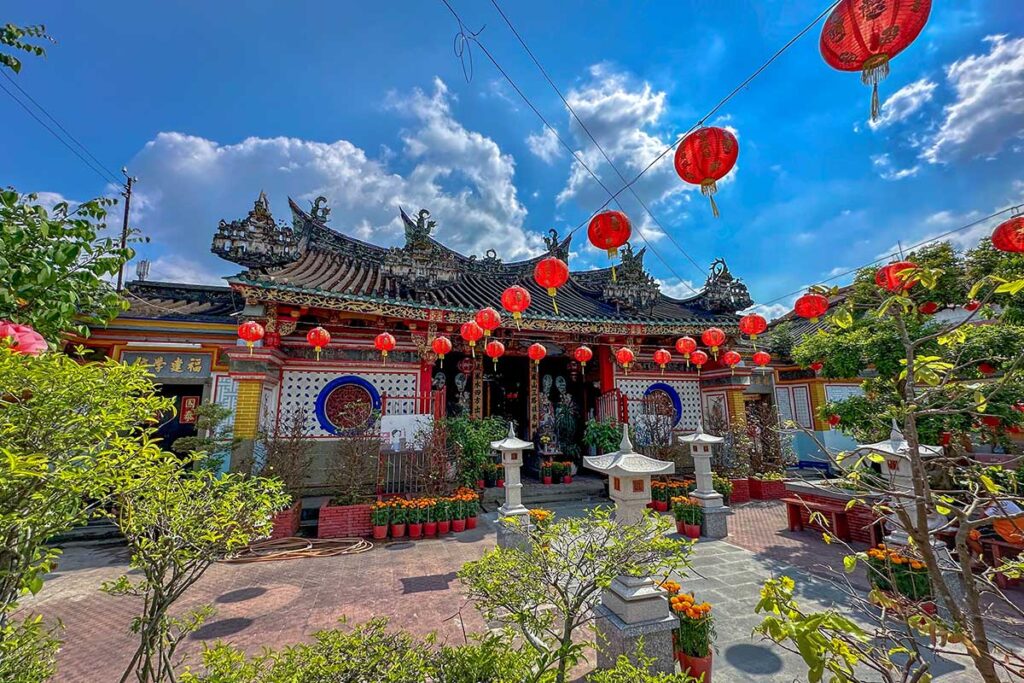
Kien An Cung Pagoda is a Chinese-Vietnamese pagoda, built in the 1920s, that reflects the town’s merchant heritage. The roof is decorated with figurines, while inside you’ll find carved wood panels and colorful ceramic reliefs. It’s small but atmospheric, especially if you’re interested in community history. Dress modestly when visiting, and be discreet if taking photos.
5. Kim Hue Pagoda
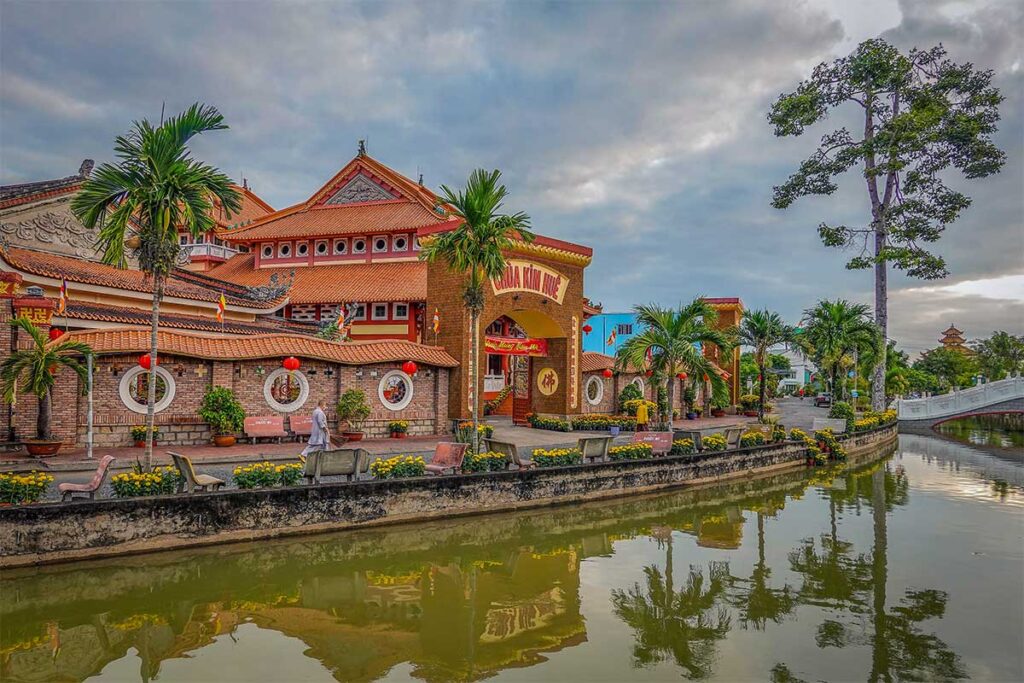
An older pagoda with Theravada influences, Kim Hue offers a quieter escape. The courtyard is shaded and peaceful, making it a good stop if you’re exploring the town on foot. It’s not a major sight, but combined with other pagodas and the riverside, it rounds out a cultural walk.
6. Sa Dec Market
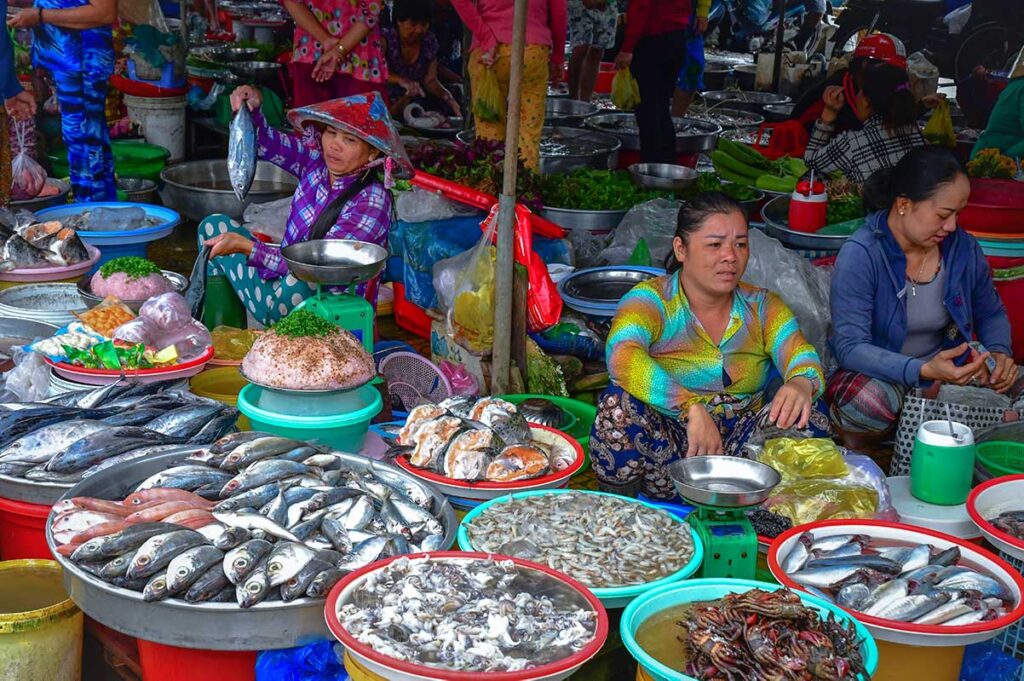
The market sits right by the river and is where daily life is most visible. Early morning is the busiest, with stalls selling produce, flowers, and snacks, while boats unload goods from nearby villages. Expect narrow aisles and wet floors, so wear sturdy shoes and carry small bills for purchases. It’s less about souvenirs and more about seeing how the town eats and shops.
7. Boat tours & Mekong cruises (from Sa Dec)
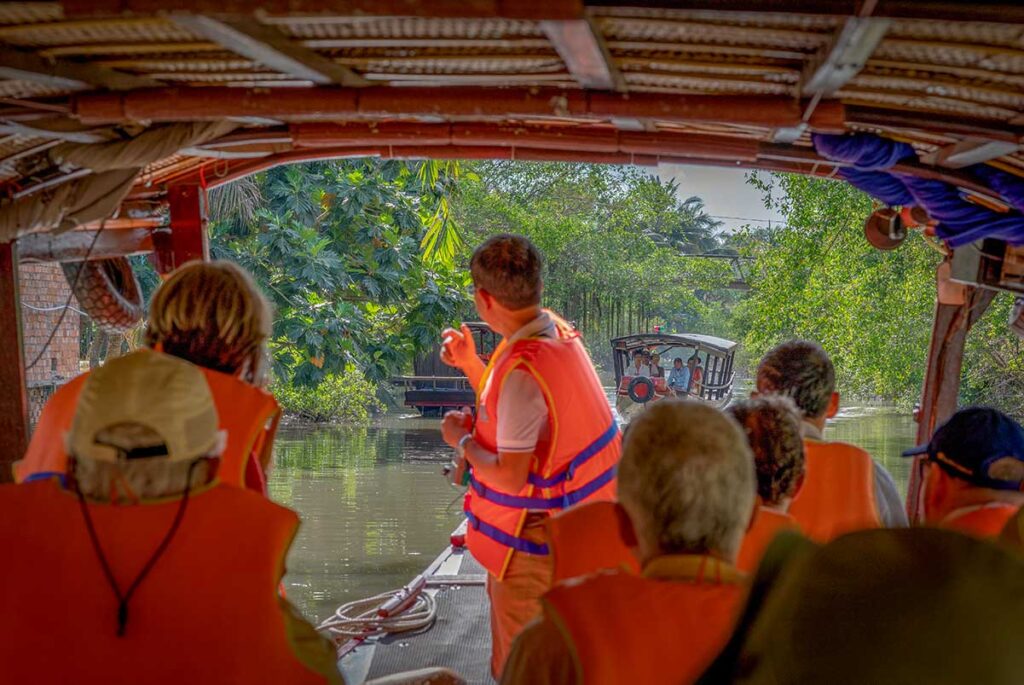
From Sa Dec you can arrange short boat rides through canals and along the river. These are calm, scenic loops rather than floating market experiences—good for watching local life, not for buying goods from boats. Hotels and homestays can arrange trips, with dawn or late afternoon being the most atmospheric times.
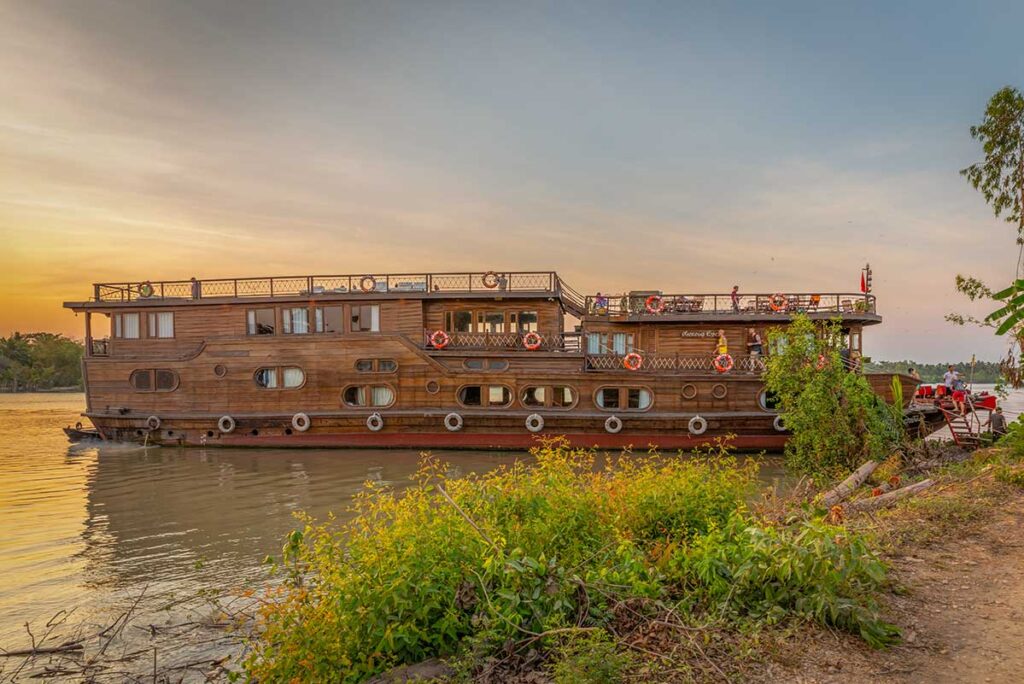
Longer itineraries are also possible: some Bassac-style Mekong cruises include Sa Dec on their Cai Be–Vinh Long routes, but these run on fixed schedules and need to be booked ahead.
Things to do around Sa Dec
While the town itself has a handful of attractions, the things to do around Sa Dec are what really show off the Mekong Delta’s character. The surrounding countryside is dotted with canals, fruit orchards, bird gardens, lotus fields, and even historic relic sites. Most of these places are within 30 minutes to 1.5 hours by car, making them easy day trips or half-day loops from Sa Dec.
1. Xeo Quyt Forest (≈45 min)
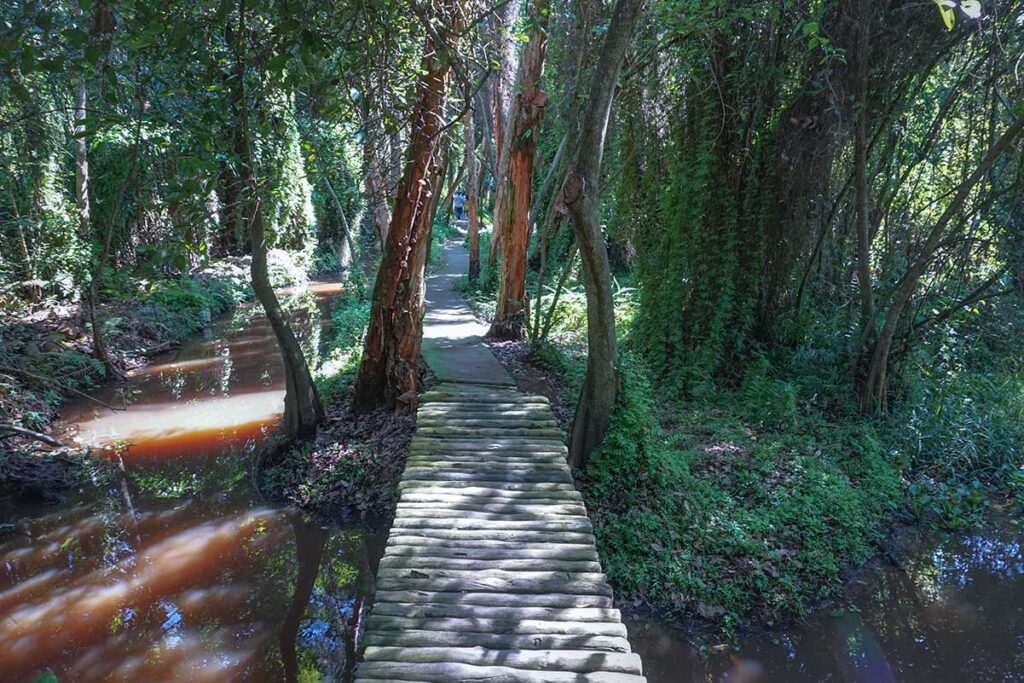
A melaleuca swamp crisscrossed by narrow canals, Xeo Quyt hides war-era bunkers once used by the Viet Cong. You can explore on shaded walking paths or by small sampan, which glides quietly through the dense cajuput trees. Facilities are simple, so bring water and insect repellent. Cooler mornings are the most comfortable time to visit.
2. Lai Vung Tangerine Gardens (≈30 min; Dec–Jan peak)
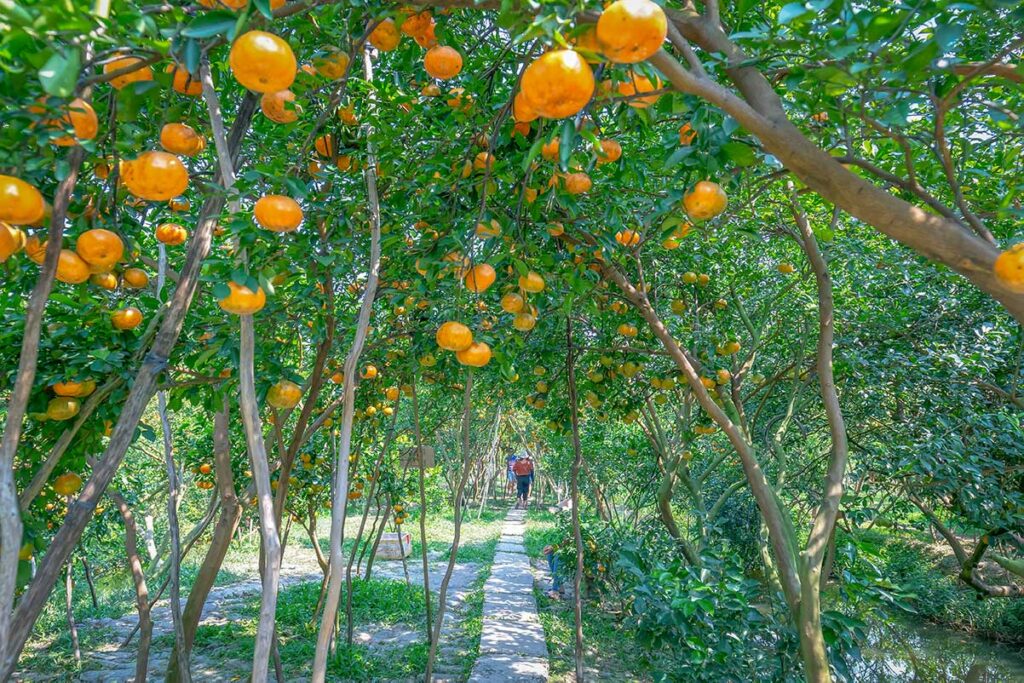
This district is famous for its sweet mandarins, and in December–January the orchards glow with ripe fruit. Some families open their gardens to visitors for a small fee, while roadside stalls sell fruit by the kilo. Outside harvest season, expect fewer activities—the area is still pleasant for a countryside drive, but don’t count on heavy fruit displays year-round.
3. Dinh Yen Mat Weaving Village (≈40 min)
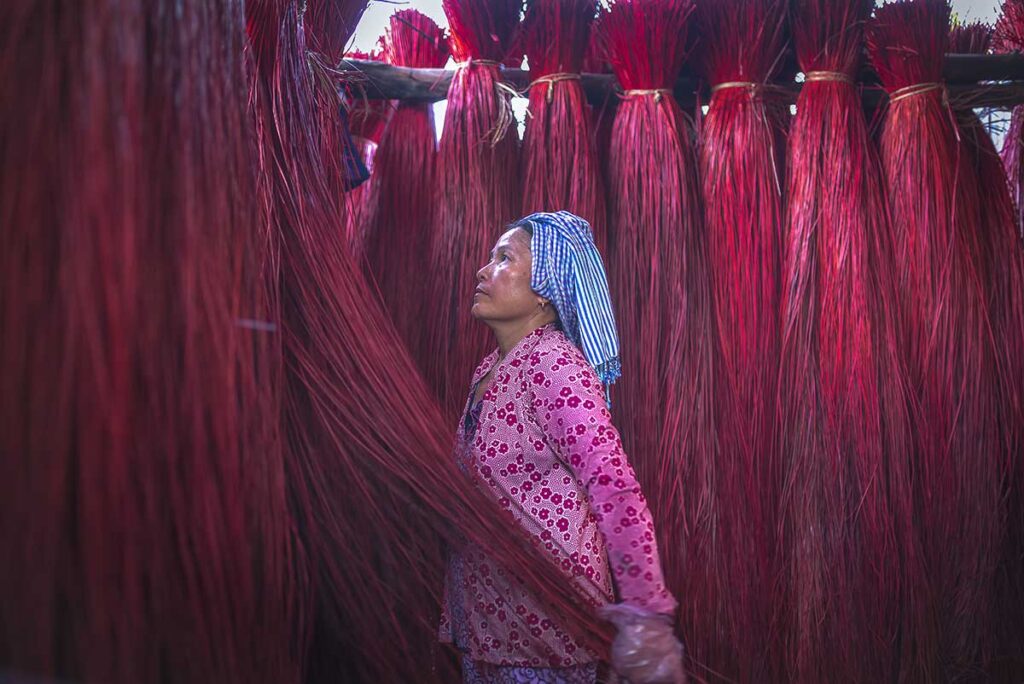
Dinh Yen is known for its bright sedge mats, recognized as intangible cultural heritage. Many households still weave on traditional looms, and you can see the process from raw sedge to finished product. It’s a low-key stop but pairs well with Lai Vung, as they’re on the same route.
4. Bang Lang Stork Sanctuary (≈1 hr; Can Tho side)
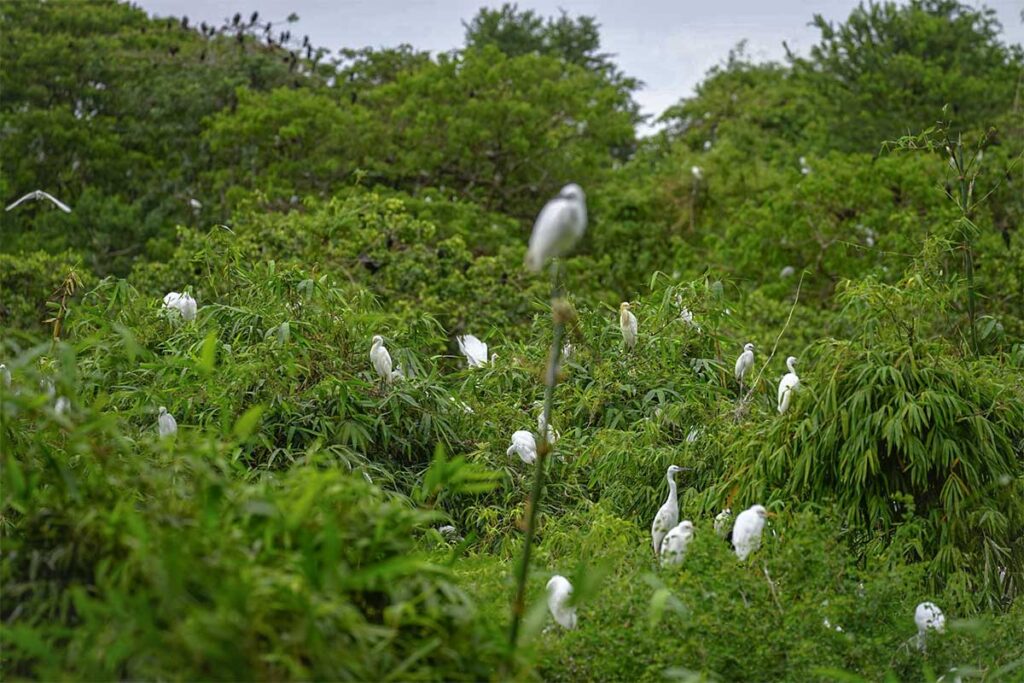
Although located in Can Tho Province, the Bang Lang Stork Sanctuary is closer to Sa Dec than to Can Tho City, making it a practical day trip from here. The reserve is a large stork roost where thousands of birds return at dusk, filling the sky with a spectacular display. Facilities are basic—expect a viewing tower, simple wooden paths, and a few food stalls. The sanctuary combines well with stops at Lai Vung Tangerine Gardens and Dinh Yen Mat Weaving Village, which lie on the same general route.
5. Tram Chim National Park (≈1.5 hr)
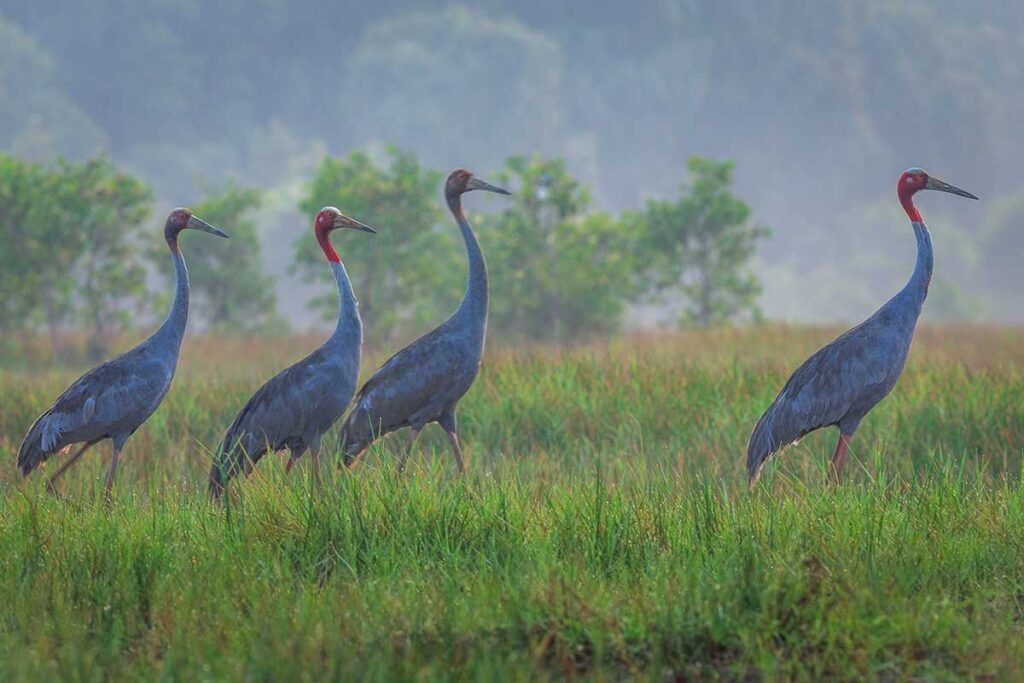
The biggest wetland reserve in the province, Tram Chim is a vast area of lotus, reeds, and water channels. Boat tours take you deep into the park to see water birds, and if you’re lucky (late dry to early wet season) you may spot the rare Sarus crane. There are no large animals here—this is more about landscapes and birdlife—so it appeals most to nature enthusiasts. Hiring a guide or booking through the visitor center helps make the most of the visit.
6. Go Thap Relic Site (≈1.5 hr)
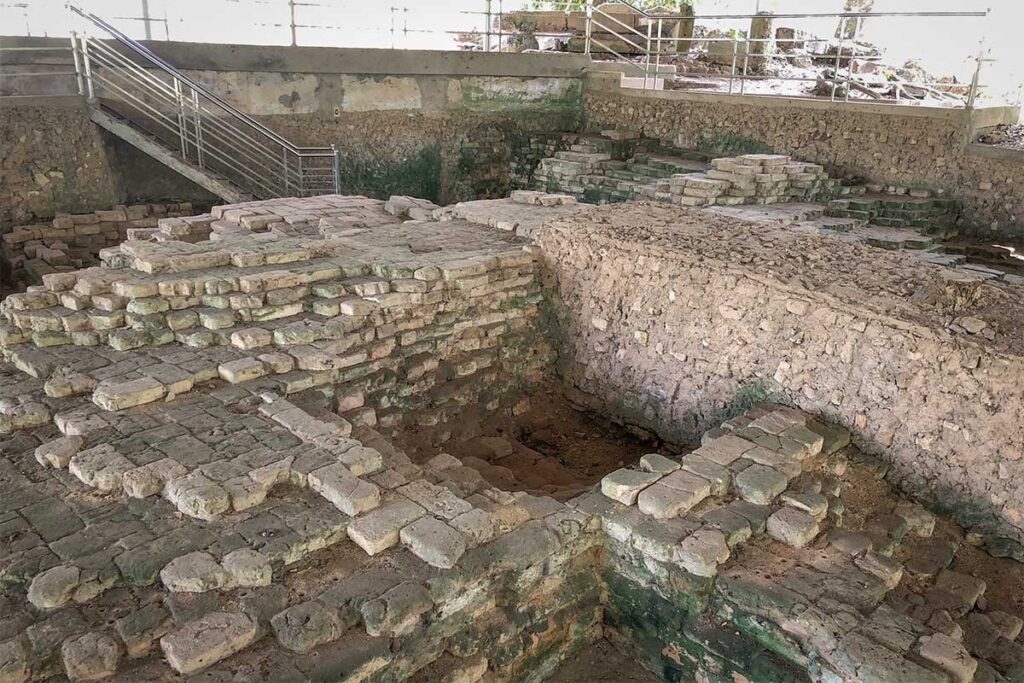
An archaeological site tied to the ancient Oc Eo culture, Go Thap has temple ruins, stelae, and a small museum. It’s not visually dramatic, but history buffs may find it interesting for its link to early civilizations in the Mekong Delta. It sits close to the Thap Muoi lotus fields, making the two easy to combine.
7. Thap Muoi Lotus Fields (≈1.5 hr; bloom varies)
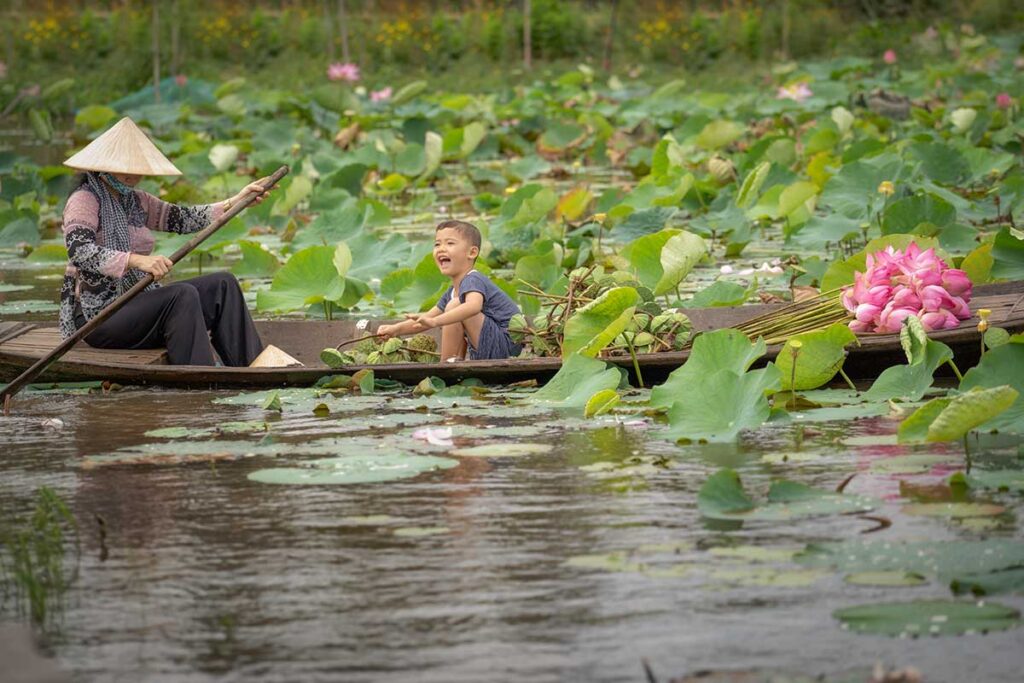
Expansive lotus ponds with wooden walkways and small sampans, these fields are a favorite for photography. The flowers are best in the morning when they’re fully open, and bloom depends on the season. Local stalls serve dishes made with lotus seeds and stems. Bring sun protection as shade is limited.
Best time to visit Sa Dec
The standout time to visit Sa Dec is in the 2–3 weeks before Tet (late January or early February), when the Flower Village is at its peak and boats are loaded with blossoms heading across Vietnam. This is when the town feels most alive and colorful.
Outside of Tet, Sa Dec is still visitable year-round. The dry season (November–April) brings more sun and hotter afternoons, while the rainy season (May–October) keeps everything green, with showers that usually pass quickly. The floating season (roughly September–December) raises water levels across the Delta, making wetlands like Tram Chim and lotus fields around Thap Muoi especially scenic, though it doesn’t affect much inside the town itself.
How to get to Sa Dec
Location of the town
Sa Dec sits in Dong Thap Province, about 140 km from Ho Chi Minh City and roughly 50 km from Can Tho. It lies on a branch of the Mekong River, connected by regional roads branching off National Highway 1A. There’s no train or airport here—the nearest airports are Tan Son Nhat (HCMC) and Tra Noc (Can Tho).
From Ho Chi Minh City
- Bus: The most common option is Phuong Trang (Futa) or similar companies. Travel time is about 3–4 hours. Futa buses drop you at Sa Dec bus station, with a free transfer van into town within about a 10 km radius.
- Private car with driver: The fastest and most flexible way, taking 3–3.5 hours depending on traffic. This is the easiest option if you want to combine Sa Dec with stops along the way, such as Cai Be or Lai Vung.
From Can Tho / Other Delta hubs
- From Can Tho: About 1.5 hours by car or bus. A practical day trip if you’re based in Can Tho and want to see the Flower Village or Huynh Thuy Le House.
- From Chau Doc / An Giang: Around 2–2.5 hours by car. Works well as part of a loop that includes Tra Su Forest or Sam Mountain before heading east into Dong Thap.
There are no trains or flights to Sa Dec, so road travel is the only option.
How to get around
Getting around the city
- Walking: Works well along the riverfront and central grid, but distances between the Flower Village, pagodas, and the ancient house are longer than they look on a map.
- Bicycle: Ideal for the Flower Village and nearby lanes. Best in the early morning or late afternoon when it’s cooler and the light is good.
- Taxi: Available, though not always waiting on the street. Ask your hotel or homestay to call one when needed.
- Ride-hailing apps: Grab and others sometimes work, but coverage is patchy—don’t rely on it.
Getting around the region
- Car with driver: The most practical way to link several stops—like Lai Vung, Dinh Yen, and Bang Lang—in one smooth loop.
- Motorbike: Possible if you’re confident, but expect busy rural roads and uneven surfaces.
- Cycling: Pleasant for short countryside rides (10–20 km). For longer 40–60 km loops, arrange sturdier bikes than the free ones at homestays and start early to avoid the heat.
Staying in Sa Dec
Sa Dec is a good choice if you want a calm base in the Mekong Delta. Staying here puts you right next to the Flower Village, makes day trips to nearby wetlands and villages easier, and lets you enjoy authentic market dinners without tourist crowds.
Where to stay:
- Riverside/central area (Nguyen Hue / Tran Hung Dao): Convenient if you want to walk to the market, Huynh Thuy Le Ancient House, and pagodas. Hotels here are simple but practical.
- Flower Village and countryside homestays: More atmospheric, with flower nurseries or canals right outside your door. Services are basic—think fans instead of air-conditioning in some places—but the setting is peaceful, and sunrise or sunset photos are a highlight.
What to expect: Don’t come looking for upscale resorts. Sa Dec accommodation leans towards modest hotels and homestays that trade polish for charm and local feel. For most travelers, that’s part of the appeal.
2-day travel itinerary (Sa Dec base)
Sa Dec works well as a base for two days: one day focused on the town and surrounding countryside, and one day devoted to nature reserves further afield.
Day 1 – Sa Dec & countryside villages
- Morning: Start in Sa Dec with the Flower Village, then continue to the Huynh Thuy Le Ancient House and nearby Kien An Cung Pagoda. All three are close together, so you can cover them easily before lunch.
- Afternoon: Head south towards the Lai Vung Tangerine Gardens (best in December–January), then continue to the Dinh Yen Mat Weaving Village. If you’re traveling by car, this loop is smooth and easy. By bicycle it’s around 50 km, which is only realistic with good bikes and an early start.
- Late afternoon/early evening: Finish the day at Bang Lang Stork Garden, timed so you arrive near dusk when thousands of storks return to roost.
Day 2 – Nature reserves
- Morning: Drive about 45 minutes north to Xeo Quyt Forest, where you can explore on foot or by sampan through the canals lined with cajuput trees and old war bunkers.
- Afternoon: Option 1 – Continue further to the Go Thap Relic Site and nearby Thap Muoi Lotus Fields, an easy pairing that combines archaeology with photogenic lotus ponds.
- Alternative long day: Instead of Go Thap, dedicate the rest of the day to Tram Chim National Park, the largest wetland reserve in Dong Thap. Boat tours take you through lotus fields and bird habitats, with a chance of spotting Sarus cranes in the right season. This option works well if you plan to continue west to Chau Doc afterward, rather than returning to Sa Dec.
Is Sa Dec worth visiting?
Sa Dec is not the kind of place that blows you away with big sights, but it has a quiet charm that appeals if you enjoy slower travel. It’s a good fit if you like flower-filled scenery, authentic markets, and easy day trips to wetlands and craft villages.
Compared within the Delta:
- Ben Tre / Cai Be: These are stronger for the classic coconut- and canal-based day trips. Sa Dec doesn’t compete on that front, but it stands out for its Flower Village and a more relaxed, less touristy feel.
- Can Tho: A larger hub with lots of hotels and the famous Cai Rang Floating Market. Sa Dec is smaller and more horticulture-focused—better if you want gardens and fewer crowds rather than nightlife and restaurant choice.
- Chau Doc: Offers dramatic hills, pagodas, and Tra Su Forest. It’s more diverse in landscapes but farther away if you’re starting from Ho Chi Minh City.
Bottom line: Sa Dec is worth visiting as a 2-day base if you value calm, flowers, and countryside loops over busy markets or urban comforts. It’s not essential for everyone, but for travelers who like offbeat towns and rural surroundings, it can be one of the more rewarding stops in the Delta.



